The Palazzo Bianco houses the largest exhibition of Genoese and Ligurian paintings in a public museum.
It includes the collections on display in the twelve rooms of the Gallery, covering mostly the period between the 15th and the 18th century, also including a brief look at medieval painting (13-14th centuries), as well as the collections in the depository, comprising eighteen rooms which will be soon opened to the public.
Luca Cambiaso is the first protagonist of the exhibition with a very significant selection of his works: from the refined works of his early maturity to those inspired by the Venetian tradition, and his last works (such as the renowned Madonna of the candle), focused and simpler in form, examples of admirable “prayers through images”.
The works of the other protagonists of the Genoese scene in the second half of the 16th century follow, including Giovan Battista Castello il Bergamasco, Lazzaro Tavarone, Andrea Semino, as well as the local master painters of the early-17th century, with paintings by Giovan Battista Paggi, Andrea Ansaldo, Luciano Borzone (the bright and elegant Baptism of Christ is worth a mention), and Domenico Fiasella. The first floor ends with a section on 17th-century portraits of Genoese origin with, among others, two works by Giovanni Battista Gaulli il Baciccio, artist of European fame and protagonist of the Roman scene in the wake of Bernini’s baroque.
On the third floor, the room dedicated to Bernardo Strozzi displays an extensive exhibition of the production of this great artist in early-17th century Genoa: a grieved and refined Magdalene, revealing of Strozzi’s fondness for Lombardy contemporary art, is paralleled by an elegant St. Cecilia and the grand Glory of St. Teresa, one of the rare altarpieces painted by Strozzi for Genoa, glowing with warm and tactile colours.
Gioacchino Assereto is presented with his best pieces: from a piercing, early St. Francis, through The Mocking of Christ, grandly inspired by Procaccini and Rubens, to the large Suicide of Cato of Utica, a coruscating scene of baroque theatre transposed onto the canvas.
The magnificent Justice by Giovanni Andrea De Ferrari with its bright colours is also worth a mention, followed by paintings by Silvestro Chiesa, known for the Miracle of the Blessed Piccolomini, as well as Orazio De Ferrari, Gio. Benedetto Castiglione il Grechetto, Sinibaldo Scorza, Anton Maria Vassallo and Antonio Travi, alongside sketches by Giovanni Battista Carlone, a famous fresco painter.
The room dedicated to one of the most celebrated masters in 17th-century Genoa, Valerio Castello, presents a splendid exhibition of works, including the magnificent Martyrdom of St. Lawrence, the Baby Moses and the burning coal and the delicate Madonna of the veil. The exhibition continues with the great Baroque period of Casa Piola, with works by Domenico Piola marked by a classical balance and refined colour palette, such as the Athenaeum of Fine Arts, alongside sketches for frescoes, such as The Coronation of the Virgin, in preparation for the decoration of the dome of St. Luca’s Church in Genoa; his son, Paolo Gerolamo Piola, is also featured, with a significant number of small-format sketches, related to his fresco production.
The exhibition continues in the rooms of the Palazzo Tursi with Domenico’s son-in-law, Gregorio De Ferrari, whose Noli Me Tangere and The Samaritan at the well are worth a mention, and with the ‘precious’ paintings by Bartolomeo Guidobono, refined in its brilliant colours intensified by the light and his attention to detail.
These works conclude the 17th-century retrospective and open the 18th century, documented by portraits (a gigantic Doge by Mulinaretto), landscapes (Tavella) and, especially, the rich series of eleven pieces by Alessandro Magnasco, including distinguished masterpieces such as the early San Francis in ecstasy, a tiny Christ in the garden of olives and, most importantly, Entertainment in a garden of Albaro, a real one-off depicting a fascinating scene of the 18th-century aristocratic life that animated Genoa, embraced by the painter in a wide and detailed overview.
La pesca di Tobia (234631)
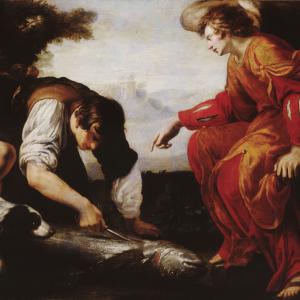
La pesca di Tobia (234631)

La pesca di Tobia (234631)

La pesca di Tobia (234631)

Mosè e la prova dei carboni ardenti (230944)
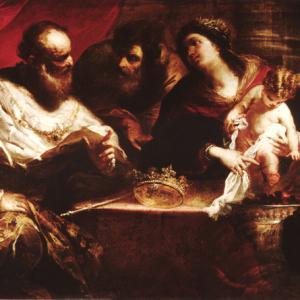
Mosè e la prova dei carboni ardenti (230944)

Mosè e la prova dei carboni ardenti (230944)

Mosè e la prova dei carboni ardenti (230944)

Cristo nell'Orto degli Ulivi (234679)
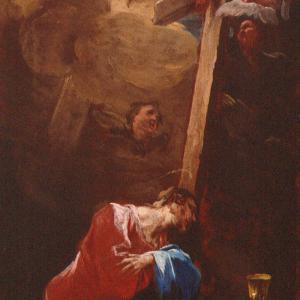
Cristo nell'Orto degli Ulivi (234679)

Cristo nell'Orto degli Ulivi (234679)

Cristo nell'Orto degli Ulivi (234679)

The Doge Francesco Maria Imperiale

The Doge Francesco Maria Imperiale

The Doge Francesco Maria Imperiale

The Doge Francesco Maria Imperiale

Entertainment in a garden in Albaro

Entertainment in a garden in Albaro

Entertainment in a garden in Albaro

Entertainment in a garden in Albaro

San Francis in ecstasy

San Francis in ecstasy

San Francis in ecstasy

San Francis in ecstasy

Moses pours water out of the rock

Moses pours water out of the rock

Moses pours water out of the rock

Moses pours water out of the rock

Noli me tangere

Noli me tangere

Noli me tangere

Noli me tangere

Cristo e la samaritana (197707)
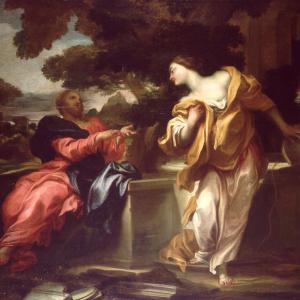
Cristo e la samaritana (197707)

Cristo e la samaritana (197707)

Cristo e la samaritana (197707)

Incoronazione della Vergine (230829)

Incoronazione della Vergine (230829)

Incoronazione della Vergine (230829)

Incoronazione della Vergine (230829)

The Athenaeum of Fine Arts

The Athenaeum of Fine Arts

The Athenaeum of Fine Arts

The Athenaeum of Fine Arts

The martyrdom of St Lawrence

The martyrdom of St Lawrence

The martyrdom of St Lawrence

The martyrdom of St Lawrence

Madonna del velo (196922)

Madonna del velo (196922)

Madonna del velo (196922)

Madonna del velo (196922)

The death of Cato

The death of Cato

The death of Cato

The death of Cato

Incoronazione di spine (230376)

Incoronazione di spine (230376)

Incoronazione di spine (230376)

Incoronazione di spine (230376)

San Francesco confortato dall'angelo musico (197047)

San Francesco confortato dall'angelo musico (197047)

San Francesco confortato dall'angelo musico (197047)

San Francesco confortato dall'angelo musico (197047)

La musica o Santa Cecilia (197051)

La musica o Santa Cecilia (197051)

La musica o Santa Cecilia (197051)

La musica o Santa Cecilia (197051)

Baptism of Christ
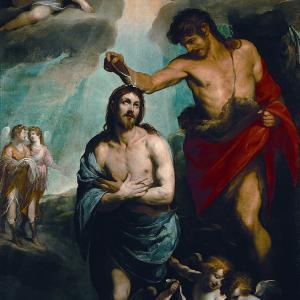
Baptism of Christ

Baptism of Christ

Baptism of Christ

Sacra Famiglia della Farfalla (197771)

Sacra Famiglia della Farfalla (197771)

Sacra Famiglia della Farfalla (197771)

Sacra Famiglia della Farfalla (197771)

Cristo alla colonna (196888)

Cristo alla colonna (196888)

Cristo alla colonna (196888)

Cristo alla colonna (196888)

Madonna of the Candle

Madonna of the Candle

Madonna of the Candle

Madonna of the Candle





